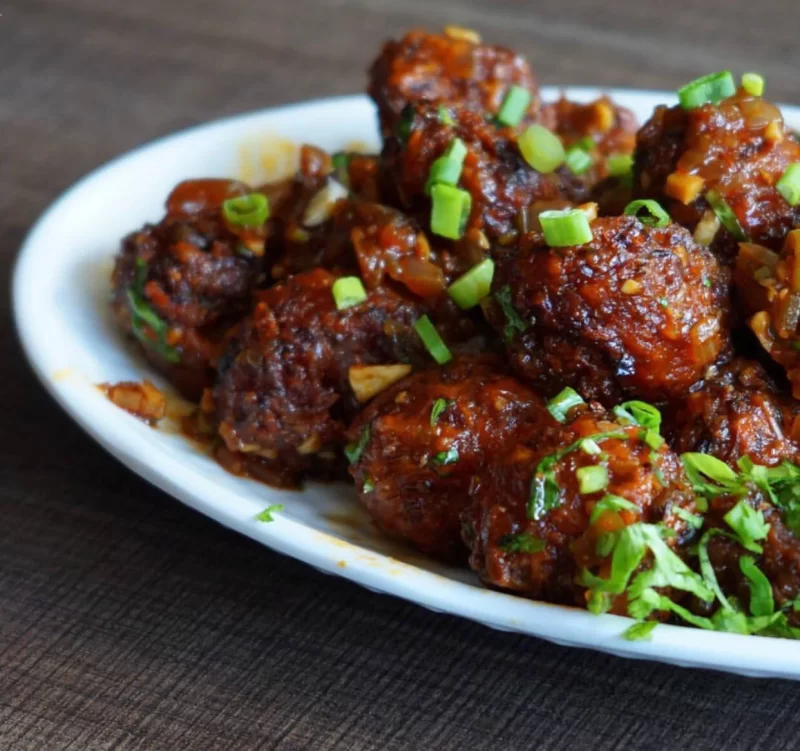Mangalore Buns Recipe: These puffed pooris are typically served with either coconut chutney or vegetable sagu and are a favorite breakfast dish in South Canara. While the taste of these buns is somewhat similar to banana cake or banana bread, they have a distinct texture achieved through different preparation steps.
Although they are referred to as pooris, there are several differences compared to traditional pooris. Banana buns pooris are sweeter in taste and have a more rubbery and flaky texture inside. Additionally, they have a thicker texture resembling bread or buns, hence the name banana buns. The sweet taste is not solely due to the addition of ripe banana; sugar is also added to the dough. The quantity of sugar may vary depending on individual preferences. I have added 1 to 1.5 tbsp of sugar for 2 bananas, but it may go up to 4 tbsp for the same quantity of banana. Furthermore, the dough for banana buns undergoes a fermentation process, unlike traditional pooris. This fermentation helps achieve the chewy and bread-like texture of banana pooris.
Here are some important tips and recommendations to preparing banana buns or Mangalore buns. Firstly, I highly recommend using ripe bananas with black spots on the peel, as they impart better flavor and aid in the fermentation process. Avoid using tender or raw bananas. Secondly, 8 hours of fermentation is typically sufficient in humid or moist weather conditions. However, if you live in a colder region, place the banana buns dough in a preheated oven or a warm place to expedite the fermentation process. Lastly, the buns last for a while and can be served even after a few hours.
Mangalore Buns Recipe Ingredients:
- 2 ripe bananas
- 1 or 2 tbsp sugar
- 1/4 cup curd/yogurt
- 1 tsp cumin seeds (jeera)
- Pinch of baking soda
- 1/2 tsp salt
- 2 cups all-purpose flour (maida)
- Oil for deep frying
Mangalore Buns Recipe Instructions:
- Firstly, take 2 ripe bananas in a large mixing bowl. If you have overripe bananas (black), they work great.
- Add 1 or 2 tablespoon sugar depending on the sweetness of the bananas.
- Mash the bananas smoothly with the help of a fork. Do not blend the bananas in a mixer.
- Now add 1/4 cup curd, 1 tsp cumin seeds, a pinch of baking soda, and 1/2 tsp salt.
- Combine well with the spoon.
- Further, add 2 cups of all-purpose flour (maida) and prepare the dough.
- Knead for 5 minutes or until the dough turns smooth.
- Grease the dough with a tbsp of oil.
- Cover and let it rest in a warm place for 8 hours.
- The next day, knead the dough slightly and pinch a ball-sized portion of the dough.
- Dust it with some flour and roll it slightly thicker than a poori.
- Deep fry the buns in hot oil.
- Fry the buns on both sides over medium heat until they turn dark golden brown on both sides.
- Finally, serve the mangalore buns/banana buns/banana poori with chutney or saagu. You can also enjoy them plain.
Conclusion:
In conclusion, Mangalore Buns Recipe are a delightful breakfast dish popular in South Canara, served with coconut chutney or vegetable sagu. While similar to traditional pooris in appearance, they offer a unique taste and texture due to the addition of ripe bananas and sugar in the dough, as well as the fermentation process. With the right ingredients and preparation steps, you can enjoy these flavorful and fluffy buns as a tasty start to your day or a satisfying snack anytime.
FAQs about Mangalore Buns Recipe
What makes Mangalore buns different from traditional pooris?
Mangalore buns, although referred to as pooris, have several differences compared to traditional pooris. They are sweeter in taste, with a more rubbery and flaky texture inside. Additionally, they have a thicker texture resembling bread or buns, hence the name “banana buns.” The sweet taste is not solely due to the addition of ripe banana; sugar is also added to the dough.
Why is it important to use ripe bananas with black spots for this recipe?
Ripe bananas with black spots on the peel impart better flavor and aid in the fermentation process required for Mangalore buns. Avoid using tender or raw bananas as they may not provide the desired taste and texture.
How long does the fermentation process take, and what should be done in colder regions?
In humid or moist weather conditions, 8 hours of fermentation is typically sufficient. However, in colder regions, you can expedite the fermentation process by placing the banana buns dough in a preheated oven or a warm place. This helps to achieve the desired chewy and bread-like texture.
Can the quantity of sugar in the recipe be adjusted?
Yes, the quantity of sugar in the recipe can be adjusted according to individual preferences. Typically, 1 to 1.5 tablespoons of sugar for 2 bananas are used, but it may go up to 4 tablespoons for the same quantity of banana.
How long do Mangalore buns last, and can they be served later?
Mangalore buns last for a while and can be served even after a few hours. They remain fresh and delicious, making them a convenient option for breakfast or snacks throughout the day.

